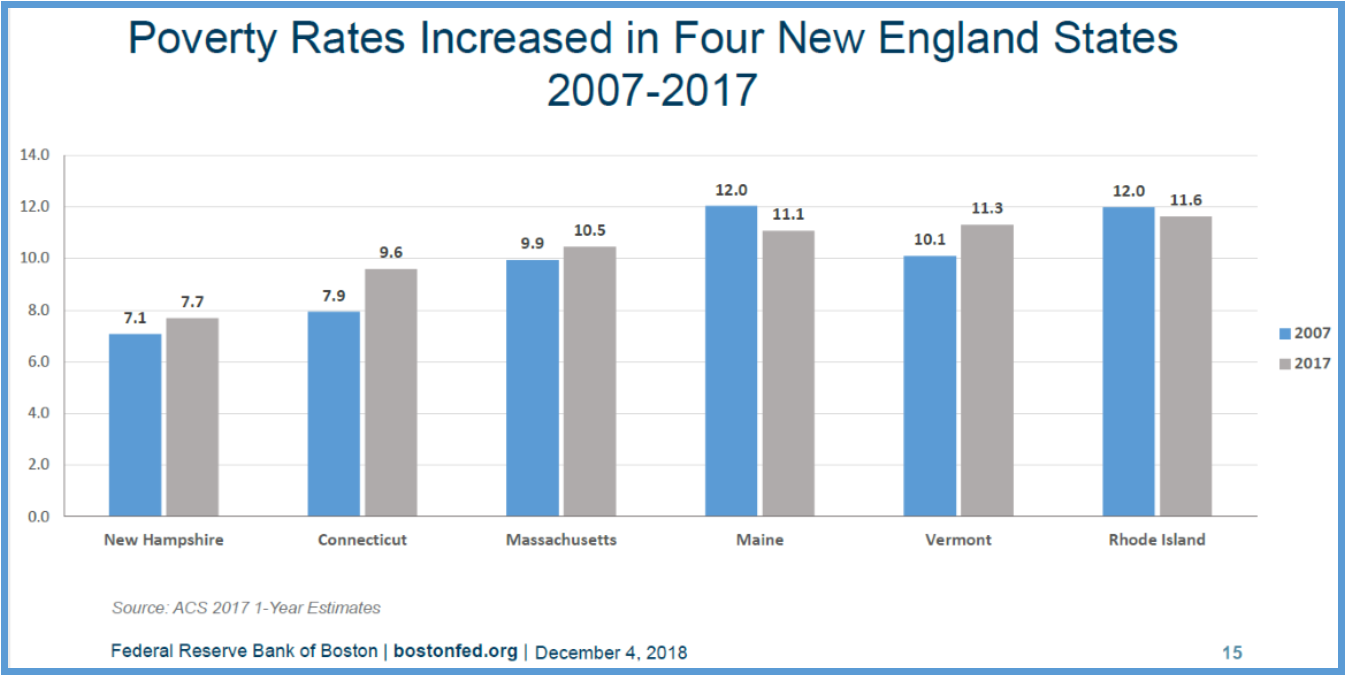Amidst Economic Recovery in New England, Poverty Rate Remains Highest in CT
/Between 2007 and 2017, the poverty rate increased more in Connecticut than any of the New England states. According to data analyzed by the Federal Reserve Bank of Boston, Connecticut’s poverty rate increased from 7.9 percent to 9.6 percent, and increase of 1.7 percentage points, or about a 20 percent increase.
Four of the six New England states saw increases: New Hampshire (.6%), Massachusetts (.6%), Vermont (1.2%) and Connecticut. The other two New England states, Maine and Rhode Island, saw decreases, of .9 and .4 percent respectively.
The analysis found “a regional economic picture with some surprises and plenty of complexity,” the Boston Fed website points out.
It found that across New England, compared with 2007, fewer New Englanders are unemployed but the unemployed are more likely to be poor than in 2007, and those still out of work face diverse barriers to employment. New England’s unemployed are disproportionately young, non-white, and less educated, according to the data.
Among the other findings:
- Long-term unemployment, defined as 27 weeks or longer, is down nationally since 2010, but less so in New England.
- Among 25-54 year olds, the male employment rate is down since 2007, while the female employment rate has gone up.
- Two industries accounted for more than half of job gains in the region between 2016 and 2018: Professional & Business Services and Education & Health Services. Among the other categories, Construction, Leisure & Hospitality and Manufacturing saw the largest gains.
 Although poverty rates declined in all New England states between 2014 and 2017, as of 2017 four out of the six states exhibit higher poverty rates than they did in 2007. Among the region’s unemployed workers, the poverty rate as of 2017 is higher than it was in 2007, and it’s also higher than it was in 2010, after the recession had officially ended, the Boston Fed points out.
Although poverty rates declined in all New England states between 2014 and 2017, as of 2017 four out of the six states exhibit higher poverty rates than they did in 2007. Among the region’s unemployed workers, the poverty rate as of 2017 is higher than it was in 2007, and it’s also higher than it was in 2010, after the recession had officially ended, the Boston Fed points out.
Mary Burke, a senior economist at the Federal Reserve Bank of Boston, views the delayed and incomplete recovery in poverty rates as both surprising and troubling, as it could indicate an erosion of the safety net.





























